When I was hired with Florida Sea Grant, I developed an advisory committee who represented a variety of stakeholder interest in the Pensacola Bay area. I asked the committee to list their top three concerns or issues with the local marine environment so that I could have a start on where I would focus my education programs. I was expecting a variety of answers, but all of them wrote water quality.
Each October I send a survey to those who have read one of my articles, or attended one of my programs to see what behavior changes they may have made to improve the health of the bay and I ask them which topics should be the focus for the upcoming year. Water quality is always on that list and is usually the first. 2024, was no different, water quality remains the number one topic.
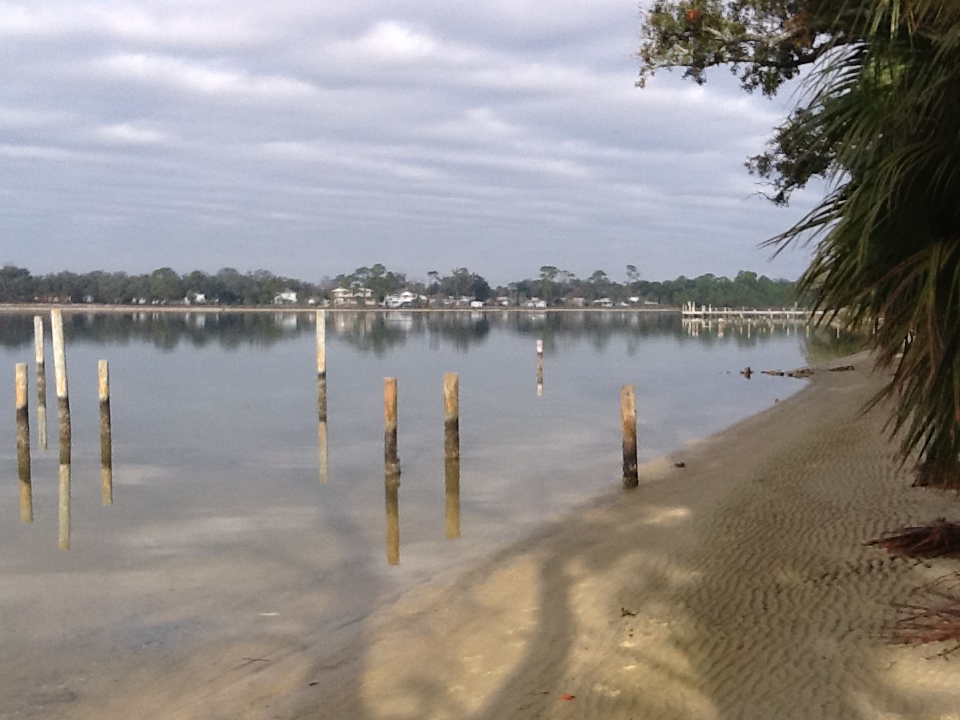
There are numerous issues that impact our water quality. In a 2016 EPA publication, Dr. Mike Lewis (et.al.) discussed a variety of environmental concerns that had impacted the Pensacola Bay System1. Between pages 23-86 of this 145-page document the topic of water quality is discussed. Topics include what contaminants we discharge into the waterways, ground water quality, surface water quality, sediment quality, bioaccumulation, and the risk these contaminants have on estuarine fish and wildlife, as well as humans. The contaminants reach our waters using a variety of ways including the atmosphere, ground water, tributaries, municipal and industrial wastewater, and stormwater runoff. With a variety of issues at hand, I asked my advisory committee for advice on prioritizing these issues. Surface water quality rose to the top and I began our program here.
Surface waters have issues such as eutrophication (excess nutrients triggering algal blooms which trigger low dissolved oxygen which trigger fish kills), chemical contamination of sediments, water clarity due to increase sediments, fecal bacteria, PAHs, pesticides, PCBs, and others. Many of these have been monitored for decades. Surface water quality in the Pensacola Bay System was reported as fair in 1992, in need of improvement in 1998, and good – 30% good in 2005. Though things are improving there is still much to do.
So… what can YOU do the help?
Historically rainwater fell on the land and water of the Pensacola Bay region. The water that fell on the land either percolated through the sediments to recharge the ground water, or – if it was a form of sediment that reduced percolation rates, formed surface water that recharged the bay (streams, creeks, and rivers). With the increase in development there came an increase in impervious surfaces for water to percolate, and flooding of streets and communities became a problem. Communities began to develop methods of moving this stormwater into our properties and into the area waterways. Early the method was nothing more than discharge pipes directly into these waterways. More recently stormwater ponds, diverting to marshes, and other methods have been used. This has become an increasing problem with the high densities developments we are seeing now.
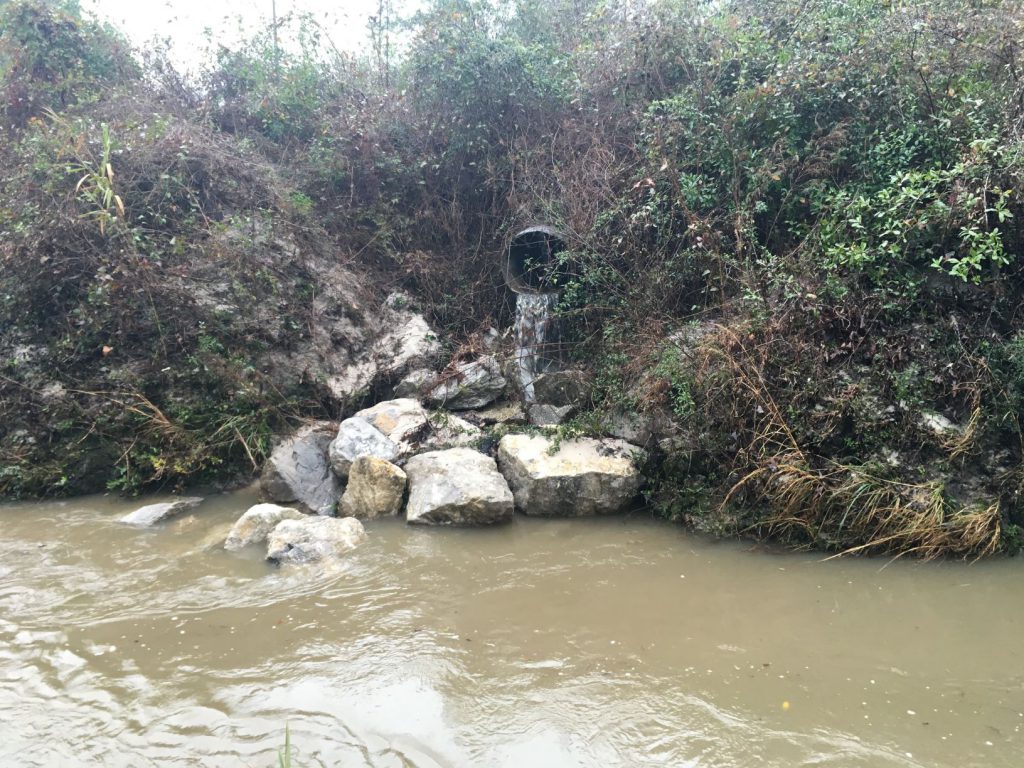
Solving this problem often falls on the city and county governments to develop ordinances to properly manage stormwater and abide by state and federal mandates. Each year, UF IFAS Extension offers a district wide workshop focused on new methods of handling stormwater. This year Part 1 of the workshop will be held on May 1, Part 2 on May 15. If you are with a city/county municipality and are interested in attending either in-person or virtually, contact your local extension office for more information. But there are things that private homeowners and businesses can do as well.
Everyone who lives in the Florida panhandle can expect rain and a lot of it. Over the last decade Pensacola has averaged around 70 inches annually. What are you going to do with the rainwater that falls on your property? In many cases there are designs for it to run off your property and contribute to the stormwater issue. However, there are ways to hold on to that rainwater and use it for good. If you have gutters you can place rain barrels at the down spouts. This water could then be used to irrigate your landscape using drip irrigation methods. You could create a rain garden. These are low areas on the property where rainwater is directed. You can then landscape these with plants that can tolerate wetter conditions and make it look attractive. You can also use previous materials for your sidewalks, patios, and even your driveway. Pervious materials will allow rainwater to percolate through reaching the ground and avoid running off towards storm drains.
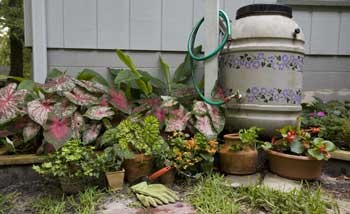

You could landscape your yard using the UF IFAS Florida Friendly Landscaping principles. Following the nine principles of this program will help reduce the need for fertilizers, pesticides, and water usage itself. Not only does this reduce irrigation water becoming part of the stormwater, but it also reduces some of the chemical pollutants that contribute to poor water quality as well. It also saves the property owner money.
Health advisories issued due to high levels of fecal bacteria are problems in many local waterways. Poorly maintained septic and sewer systems are a major cause of this. If you own a septic system, you need to develop a maintenance plan and follow it. If you are not sure how to do this, contact your county extension office for assistance.
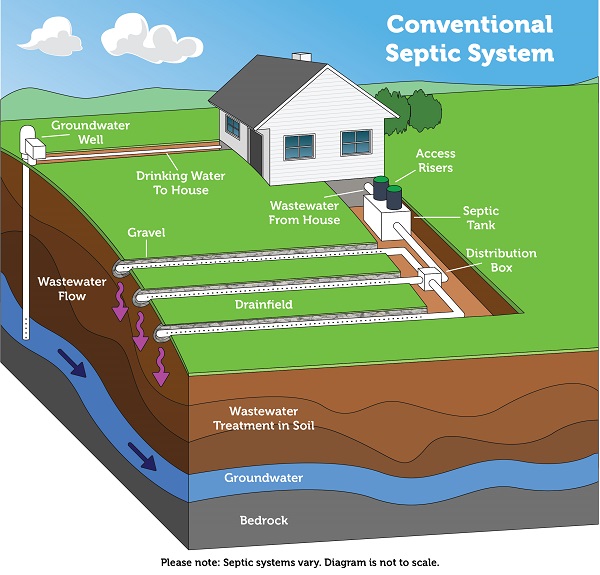
Though less maintenance is needed if you are on sewer system, there are still things you need to do to help reduce sanitary sewage overflows (SSOs). One is to watch what you pour down the drain. Fats, oils, grease, and even milk can solidify and block the flow of your sewage, and lead to SSOs. In Escambia County the Emerald Coast Utility Authority (ECUA) offers a program they call FOG. This program provides free containers where you pour your fats, oils, and grease. When full, they can be exchanged for a new container, this reduces the frequency of SSOs and ECUA will use these oils as a biofuel at their reclamation center. There may be a similar program in your community. Another practice you could adopt is to check the lateral sewer lines connecting your house to the main sewer line under the street. These lateral lines are the responsibility of the homeowner and can become clogged or cracked releasing untreated sewage into the environment.
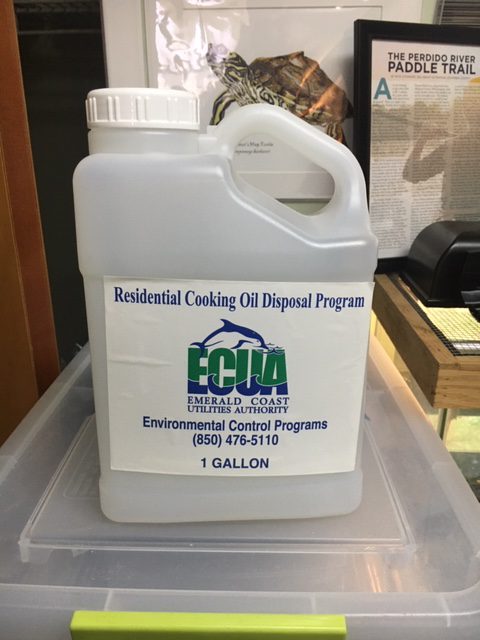
If you are a waterfront property owner, you might consider planting a living shoreline. These natural shorelines not only reduce the erosion of your property, but they also provide habitat that enhances fisheries, and the marsh plants are good at absorbing/trapping sediments and pollutants that may runoff your property. If you would like to learn more about how to have a living shoreline planted, contact your county extension office.
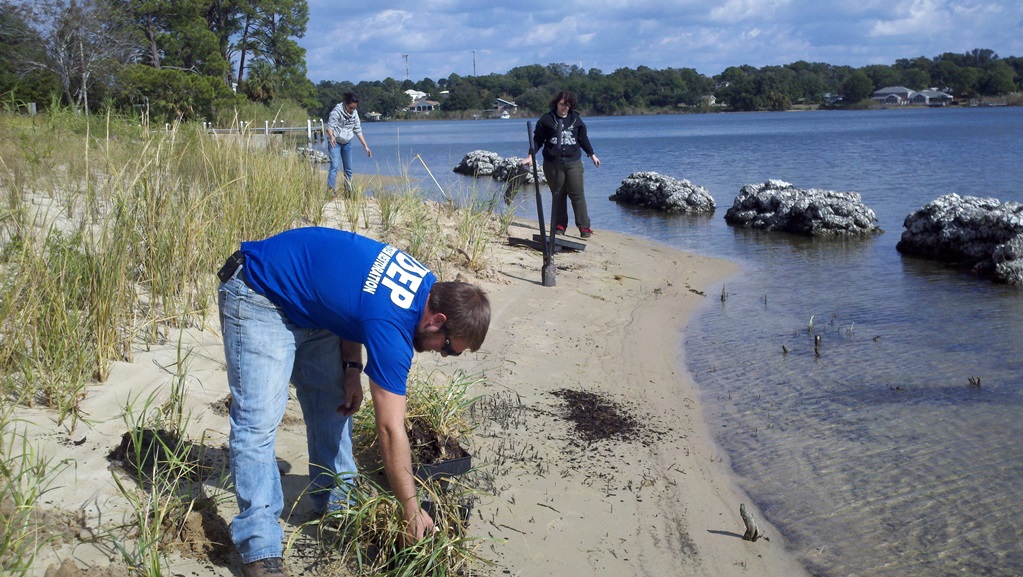
Keep in mind that the suggestions mentioned above work as well for businesses as they do for homeowners.
It is understood that water quality is a large concern for many in the Florida panhandle. Though things are improving in some areas, there is more that can be done. There are things YOU can do to help reduce this problem. Hopefully some of you will adopt some of the practices in 2024 and let us know if you do. If you have questions about any of them, contact your local county extension office.
Reference
1 Lewis, Michael, J. Taylor Kirschenfeld, and Traci Goodhart. Environmental Quality of the Pensacola Bay System: Retrospective Review for Future Resource Management and Rehabilitation. U.S. Environmental Protection Agency, Gulf Breeze, Florida, EPA/600/R-16/169, 2016.
- Snake Watch 1st Quarter Report; 2024 - April 20, 2024
- Now is the Time to Search for Invasive Cogongrass - April 20, 2024
- Searching for Mangroves in the Florida Panhandle - April 6, 2024
